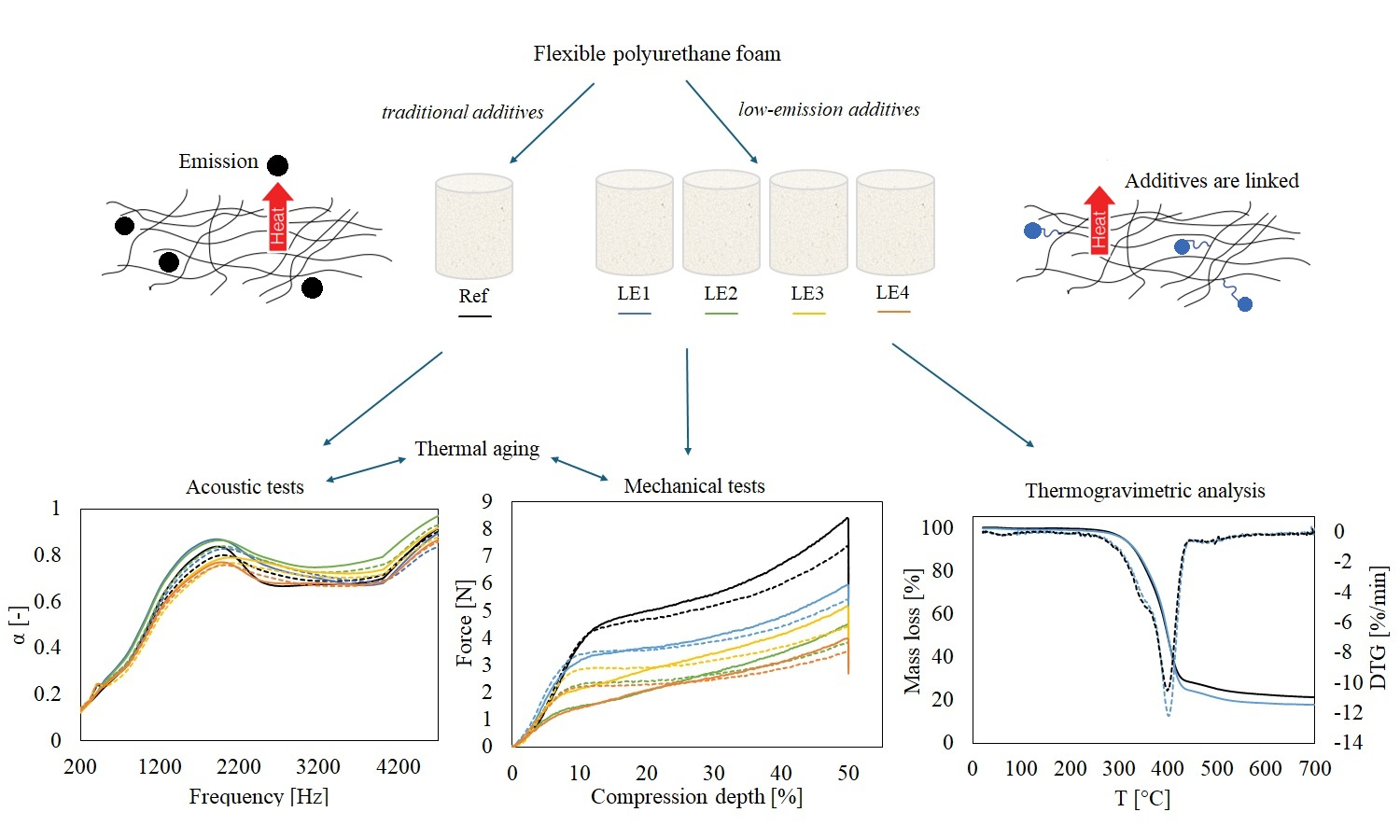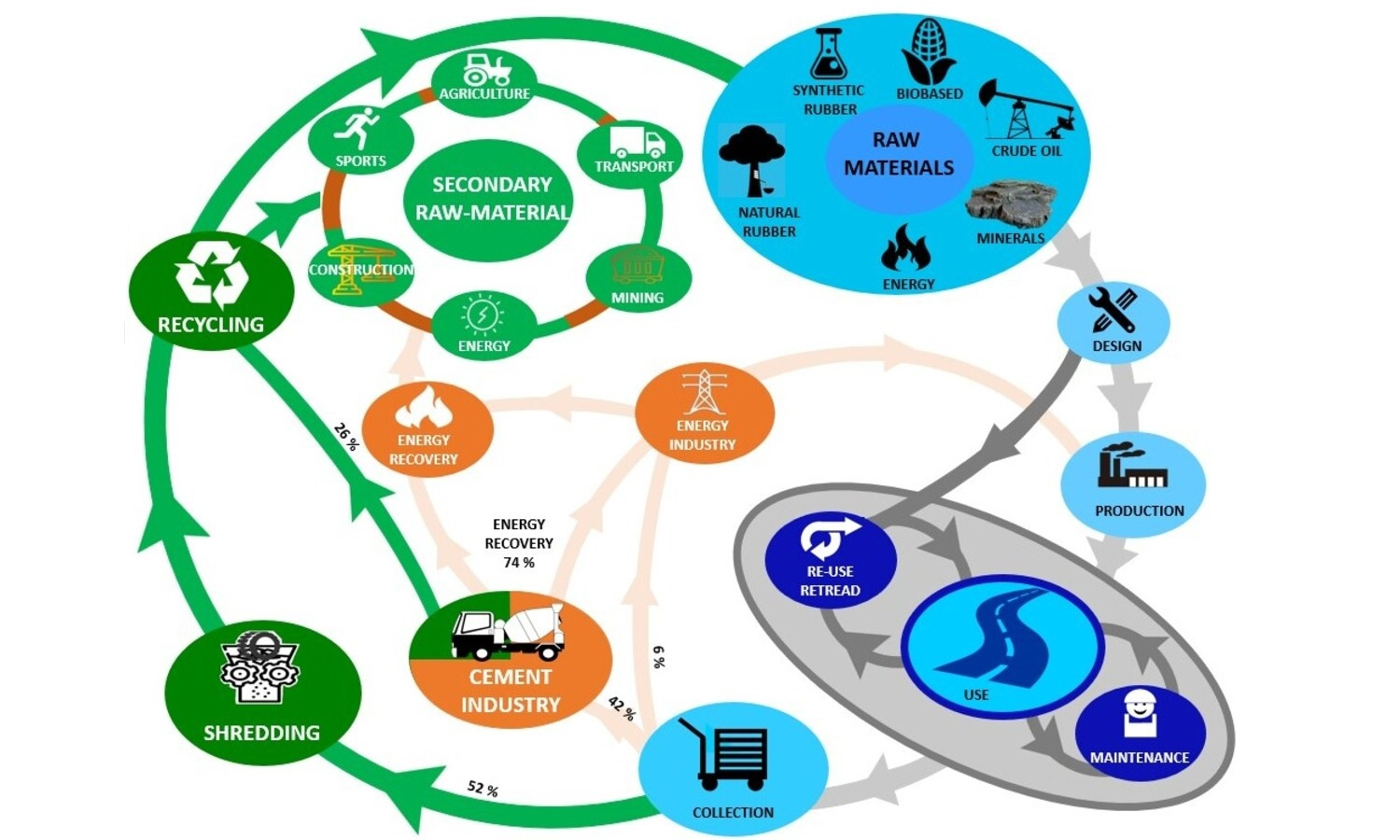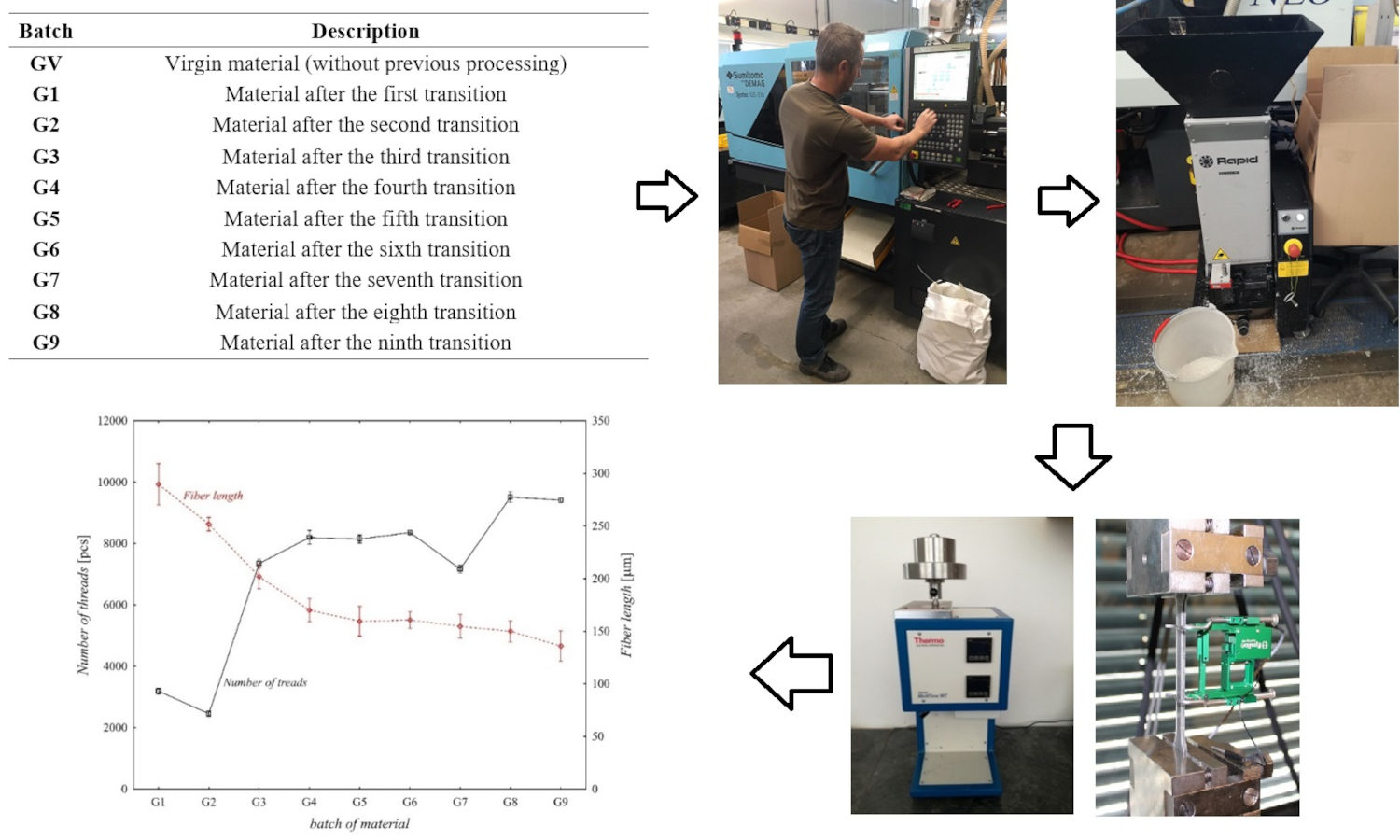Comparative analysis of thermal degradation effects on traditional and low-emission flexible polyurethane foams
Enikő Hornyák-Mester , Miklós Varga, Lilla Márta Sőrés-Tölli, Dóra Mentes
, Miklós Varga, Lilla Márta Sőrés-Tölli, Dóra Mentes , Alpár F. Hatvani-Nagy
, Alpár F. Hatvani-Nagy , Peter Werner Groh, Béla Viskolcz
, Peter Werner Groh, Béla Viskolcz , Gábor Muránszky
, Gábor Muránszky , Béla Fiser
, Béla Fiser
 , Miklós Varga, Lilla Márta Sőrés-Tölli, Dóra Mentes
, Miklós Varga, Lilla Márta Sőrés-Tölli, Dóra Mentes , Alpár F. Hatvani-Nagy
, Alpár F. Hatvani-Nagy , Peter Werner Groh, Béla Viskolcz
, Peter Werner Groh, Béla Viskolcz , Gábor Muránszky
, Gábor Muránszky , Béla Fiser
, Béla Fiser
Vol. 18., No.10., Pages 964-975, 2024
DOI: 10.3144/expresspolymlett.2024.74
DOI: 10.3144/expresspolymlett.2024.74
GRAPHICAL ABSTRACT

ABSTRACT
The degradation of different flexible polyurethane foams for molded application after thermal aging were compared. A reference sample using traditional higher emission additives and four samples of different composition using low-emission additives were compared. For the modified samples volatile organic compound (VOC) and semi-volatile organic compound (FOG/SVOC) contents fell well below the benchmarking limits, which indicates that the selected low-emission additives are incorporated into the polymer chain. To examine different material properties and for evaluating changes due to increased temperature exposure for a prolonged period of time mechanical and acoustic tests were carried out before and after dry heat aging. It was found that two low emission samples exhibited superior sound absorption compared to the reference sample along with less significant change after aging in the acoustic properties. The compressive strength was lower than the reference as a result of lower product densities. However, the change in compressive strength after aging was less than 15% (with one exception), which is acceptable according to the standard requirements. Thermogravimetric analysis was also performed and revealed that no significant difference can be observed between the examined samples due to heat degradation, indicating that the modifications made to reduce VOC content did not adversely affect the foam’s resistance to thermal degradation.
RELATED ARTICLES
Zaheer ul Haq, Teng Ren, Xinyan Yue, Krzysztof Formela, Denis Rodrigue, Xavier Colom Fajula, Tony McNally, Dong Dawei, Yong Zhang, Shifeng Wang
Vol. 19., No.3., Pages 258-293, 2025
DOI: 10.3144/expresspolymlett.2025.20
Vol. 19., No.3., Pages 258-293, 2025
DOI: 10.3144/expresspolymlett.2025.20

As a complex composite material, tire rubber has always presented significant environmental and waste management concerns due to its non-biodegradability and accumulation in landfills. The devulcanization of tire rubber has emerged as a historical challenge in the field of sustainable rubber engineering since Goodyear invented cross-linking in 1839. This review provides a comprehensive analysis of waste tire recycling processes, focusing on the sources, legislation, management strategies, and utilization across different regions. It explores the multifaceted challenges of devulcanizing rubber, with a specific focus on transitioning from ground tire rubber to the concept of multi-decrosslinking: sulfur bridge breakage, rubber chain depolymerization and micro-nano sized core-shell carbon black. Ideal devulcanization has restricted the release of reinforcing fillers, resulting in devulcanized rubber mainly containing dozens of micron particles, which hinder the wide usage of devulcanized rubber. This review comprehensively assesses the current state-of-the-art techniques for tire rubber devulcanization, including physical, chemical and biological methods. It explores the intricacies of ground tire rubber as a starting material, structural evolution of ground tire rubber during the devulcanization process and the associated challenges in achieving efficient devulcanization while retaining desirable mechanical properties. Furthermore, through an in-depth analysis of recent advancements, limitations and prospects, this paper offers a complete understanding of the challenges faced in tire rubber devulcanization. Considering the technical and environmental aspects of these processes, this work contributes to multi-decrosslinking, the ongoing discourse on sustainable materials development and circular economy initiatives, which pave the way for future innovations in the field of rubber recycling.
Stanislav Miščík, Jozef Dobránsky, Miroslav Gombár, Robert Čep
Vol. 18., No.10., Pages 1051-1062, 2024
DOI: 10.3144/expresspolymlett.2024.80
Vol. 18., No.10., Pages 1051-1062, 2024
DOI: 10.3144/expresspolymlett.2024.80

The paper deals with the influence of the brittleness of glass fibers on the selected performance properties of the fibrous polymer composite. Understanding the fatigue behavior of fiber-reinforced plastics is desirable for exploiting their features in safe, durable, and reliable industrial components. Based on the proposed methodology, it is possible to assess the impact of material reuse on selected mechanical and rheological properties. To verify the methodology by experimental analysis, homopolymer PP reinforced with chemically grafted glass fiber (30 wt%) was selected. The proposed methodology was subsequently verified by experimental analysis and evaluated statistically. The morphology of the fracture surfaces was evaluated, and the fiber-polymer matrix adhesion was monitored at the interface of the fracture surfaces. Based on the measured and evaluated values and fracture surfaces, we can say that the brittleness of the fibers significantly affects the performance properties of the tested polymer composite.



